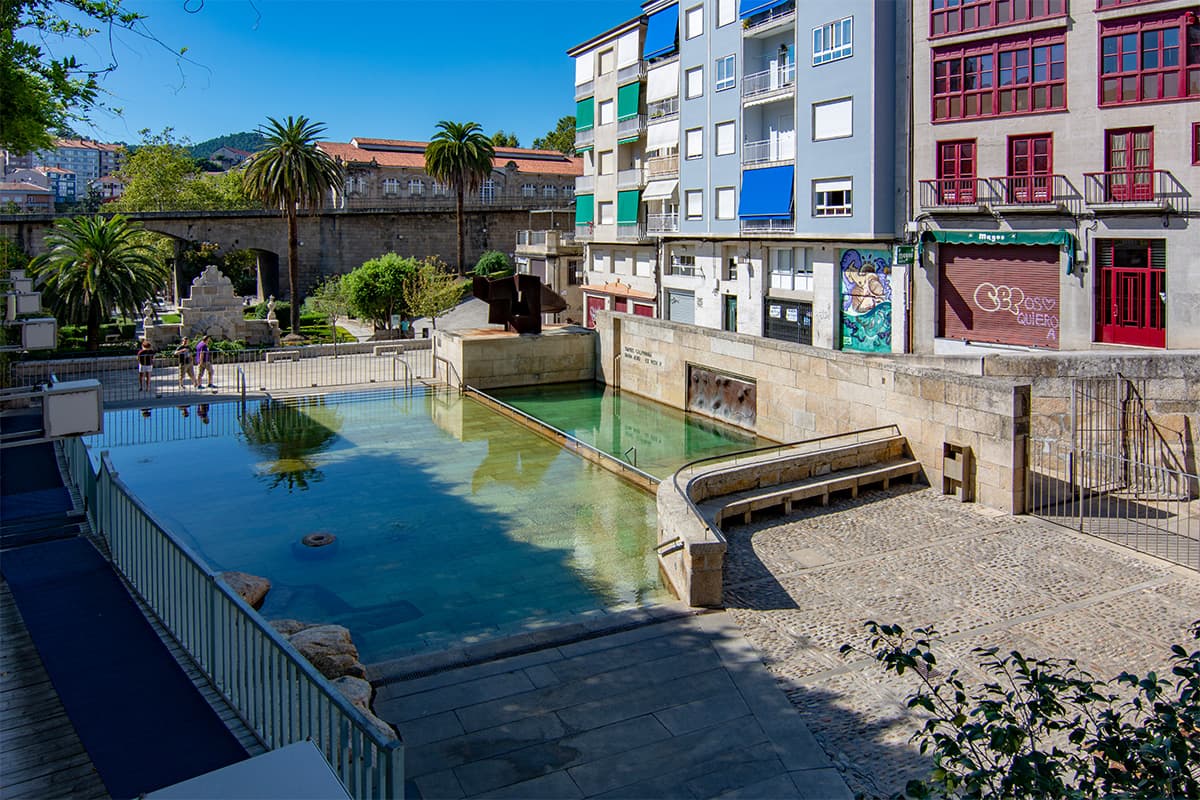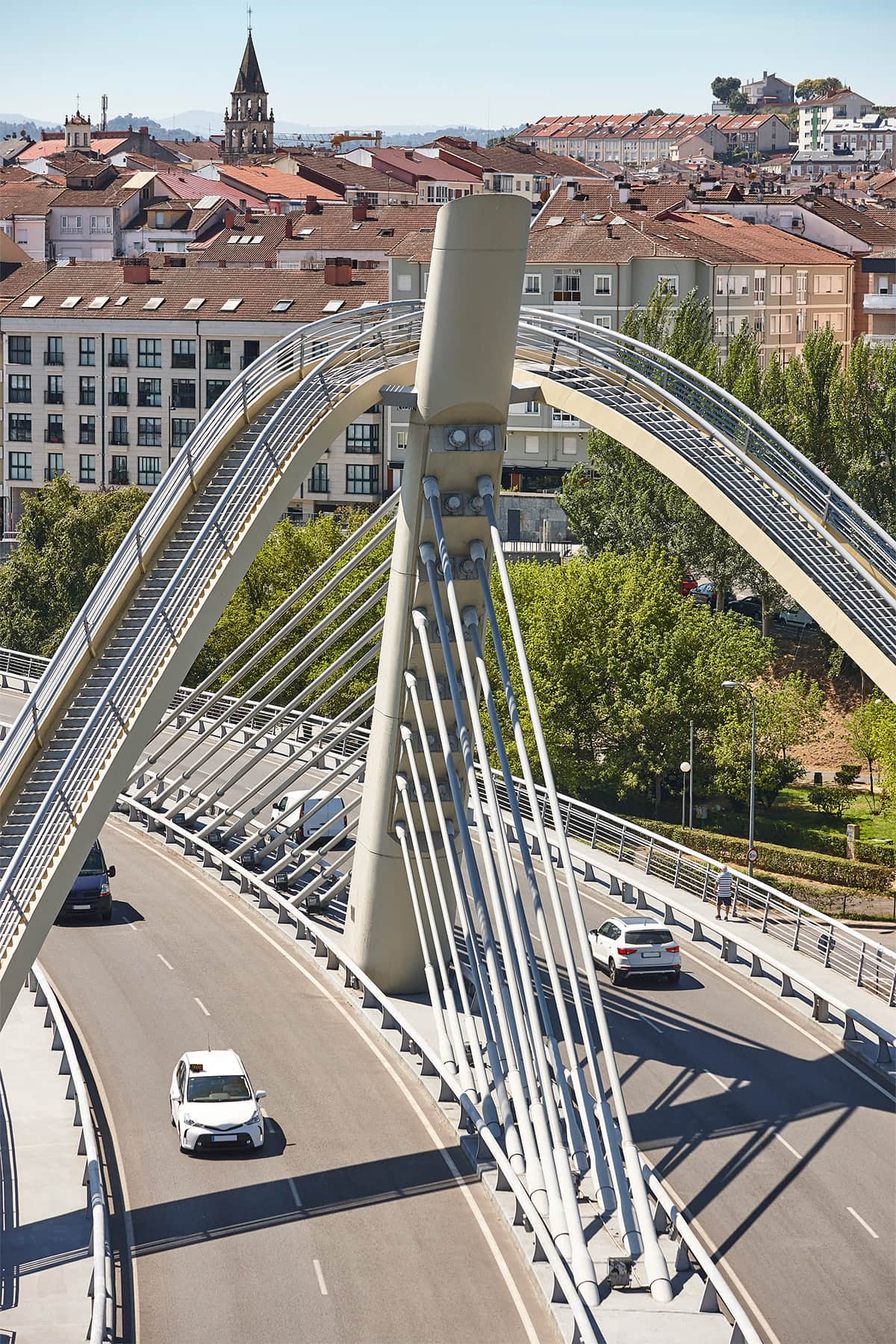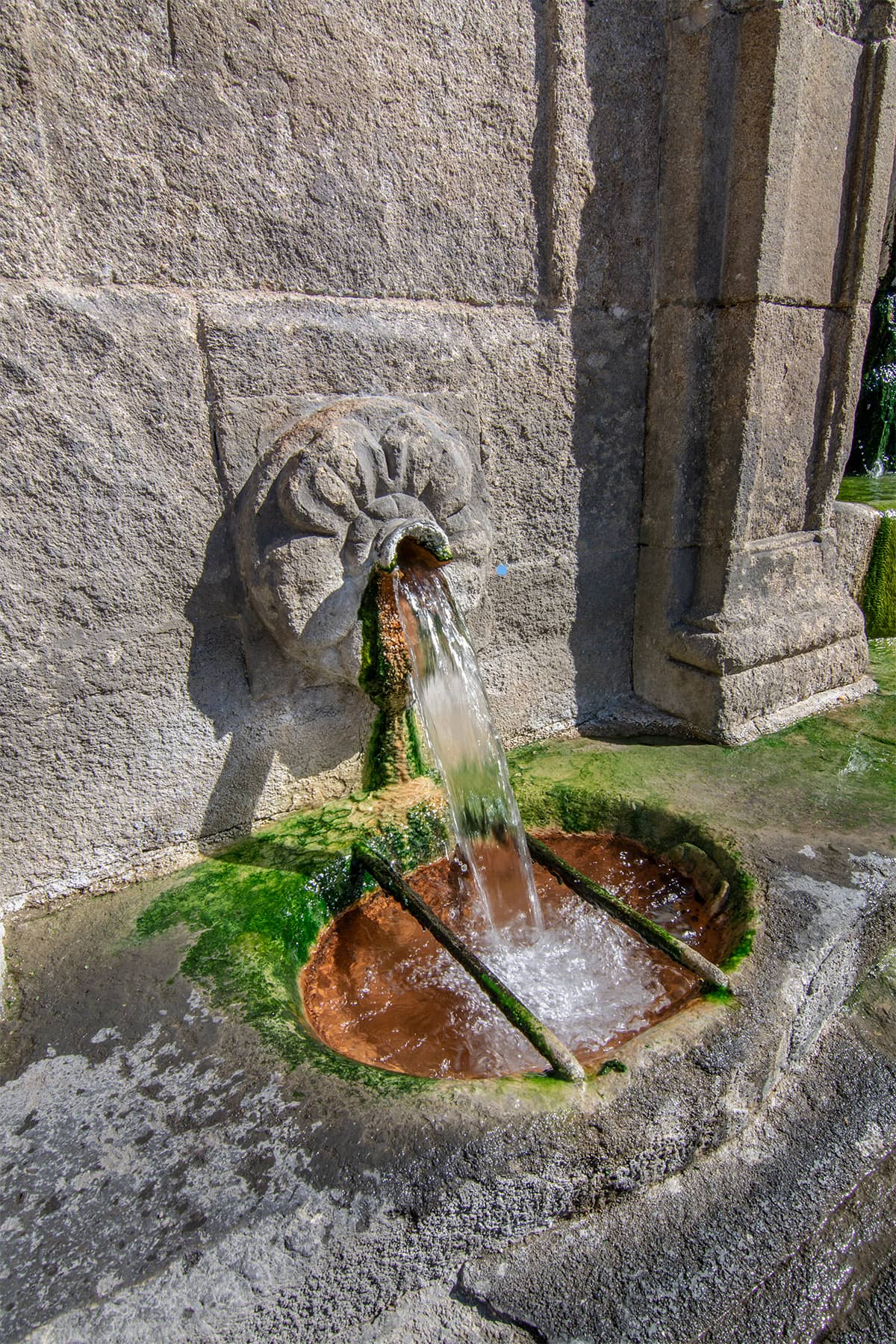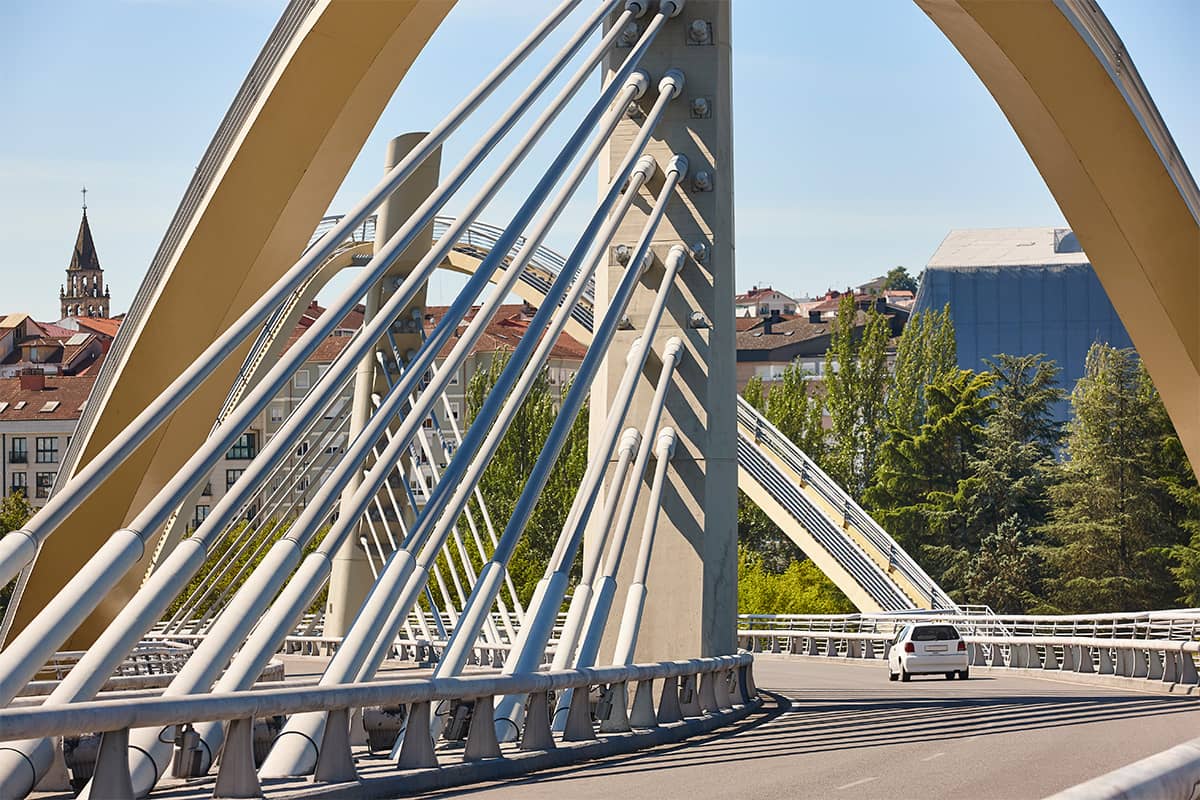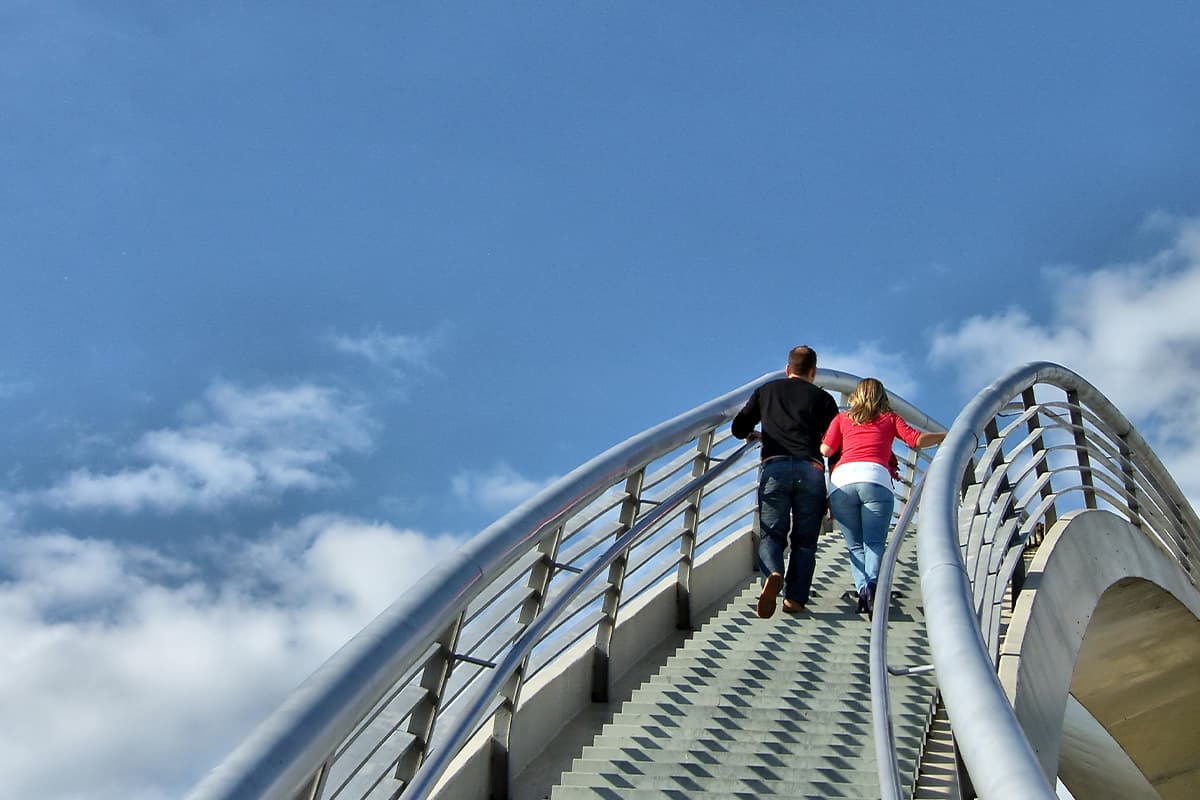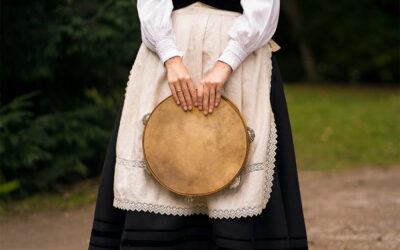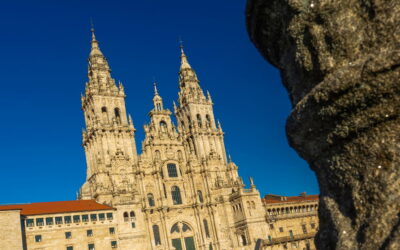visit
ourense
A charming town famous for its hot springs, spas and architecture.
Ourense, the thermal capital
Ourense is a city located in the southwest of Galicia and capital of the province of the same name. It is the third most populated municipality in the Autonomous Community, behind Vigo and A Coruña. The Miño, Barbaña and Lonia rivers flow through it and it is home to the famous thermal baths of As Burgas. In fact, in addition to the ‘city of the Burgas‘, it is also known as the Thermal Capital of Galicia.
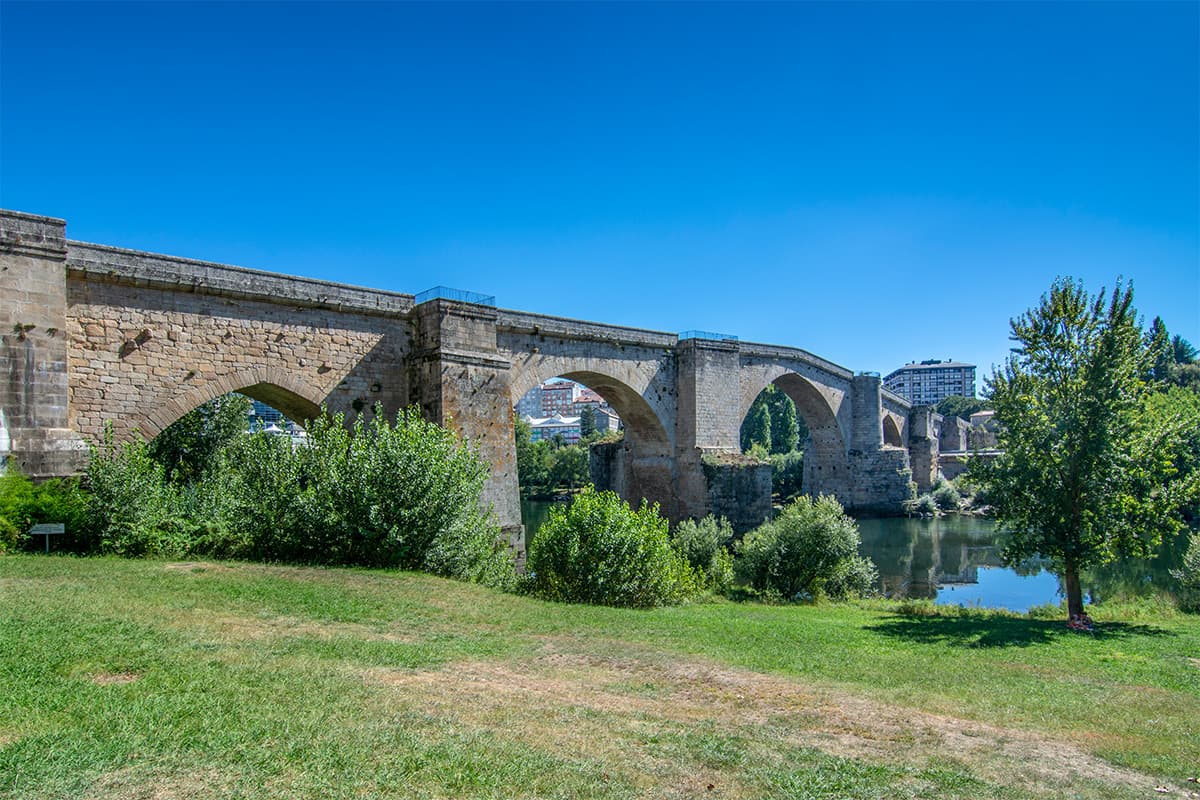
A glimpse of its history
The history of Ourense began in the Neolithic period, as it was a crossroads of roads through which the tribes passed. Many settled in the area, as shown by the forts of Beiro, Oira, Valdegola, Madrosende and Santomé, as well as the settlement of As Burgas.
The Romans arrived in Galicia in the 1st century and settled around the hot spring. During this period, they built a bridge over the Miño, which communicated Bracara Augusta and Asturica Augusta, and placed a legion to defend it. With this, the population center of As Burgas grew until it gave rise to a Roman villa.
With the fall of the Roman Empire, Ourense passed into the hands of the Suevi. However, this did not affect its growth and it became the seat of the court of the reign of Carriaric. The construction of a cathedral was begun in honor of Saint Martin of Tours, who has been the patron saint of the city ever since.
During the time of the Visigoths, it was one of the main episcopal seats of the Catholic Church, dependent on the archdiocese of Braga.
Like the rest of Galicia, Ourense suffered attacks by Arabs and Normans during the 10th and 11th centuries, which left the city in a state of socioeconomic decline. At the end of the 11th century, it passed into the hands of the bishops of the diocese, who initiated its recovery. Bishop Eredonio restored the church of Santa Maria Madre on the ruins of the old cathedral.
In 1122, the bishops obtained the jurisdiction of Dona Teresa of Portugal and ordered the construction of Castelo Ramiro. Thus, they rebuilt roads, opened new streets and squares and recovered the Roman bridge.
Already in the 12th century, the City Council of Ourense was born, formed by representatives elected by the citizens to confront the abuses of the bishopric. This was the spark that triggered the Second Irmandiña Revolt, in which the inhabitants took over the cathedral. The Catholic Monarchs tried to calm the situation, which led them to demolish the Castelo de Ramiro, a symbol of seigniorial power.
After this, the city entered a period of tranquility. In the 16th century, the town council took charge of its government, with a corregidor appointed by the king. The city continued to grow throughout the rest of the Modern Age.
In the 19th century, Ourense became a provincial capital. In addition, the arrival of the railroad and the construction of the Vilacastín-Vigo road gave a new economic impulse and the city spread to both banks of the Miño river. These events also led to the settlement of a new Castilian bourgeoisie that contributed to its expansion.
In the 20th century, the city continued to grow demographically due to the emigration caused by the Civil War. Something that has not stopped until today, when it is one of the most populated cities in Galicia.
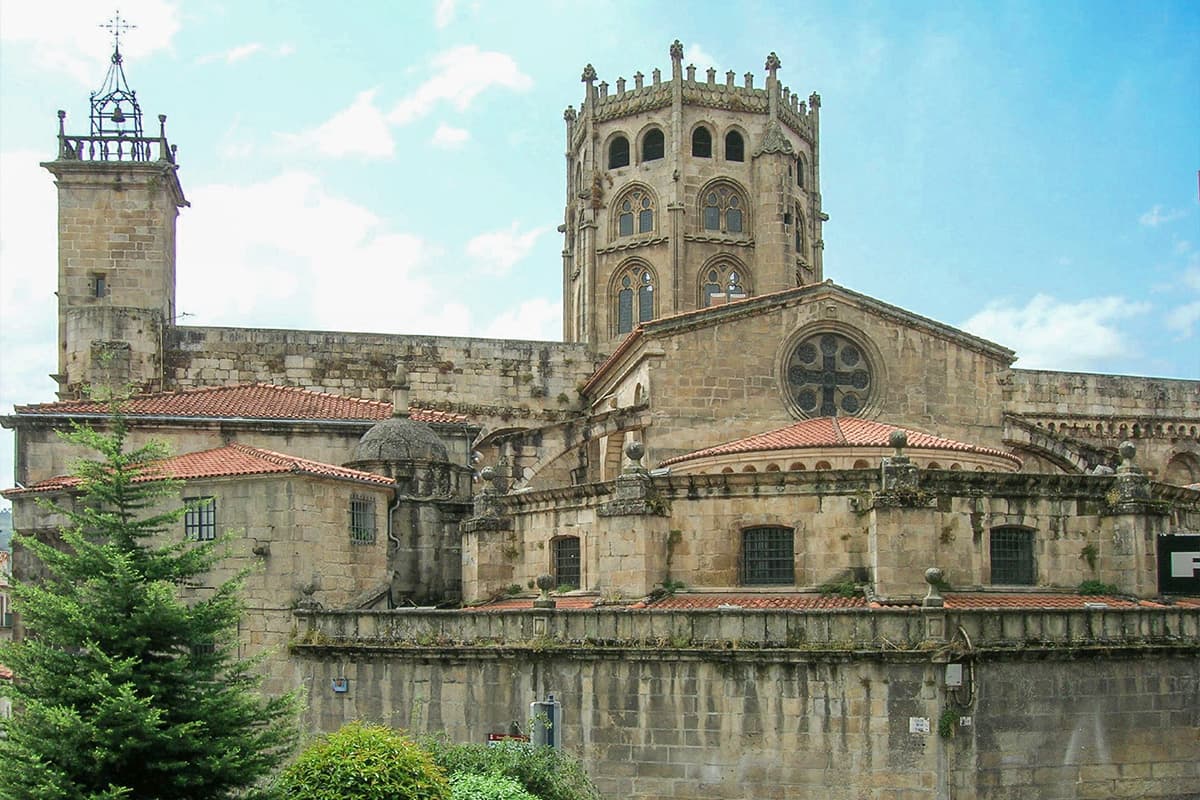
“File:Ourense Cathedral – Cabeceira.jpg” by Jose Antonio Gil Martínez. FREECAT from Vigo is licensed under CC BY 2.0.
the must-sees of ourense
Ourense is a city with a lot to offer to its visitors. It has many experiences and places to see if it is your first time there. For this reason, we tell you which are the must-see places to visit during your stay in the thermal capital.
main square
Ourense’s Plaza Mayor is the perfect place to start your visit. It is a large place with many terraces from which you can see the City Hall building while enjoying a coffee. It is surrounded by old noble buildings, with beautiful facades that give it a lot of charm. In addition, it is characterized by the inclination of the floor, something that distinguishes it from the rest of the main squares of the peninsula.
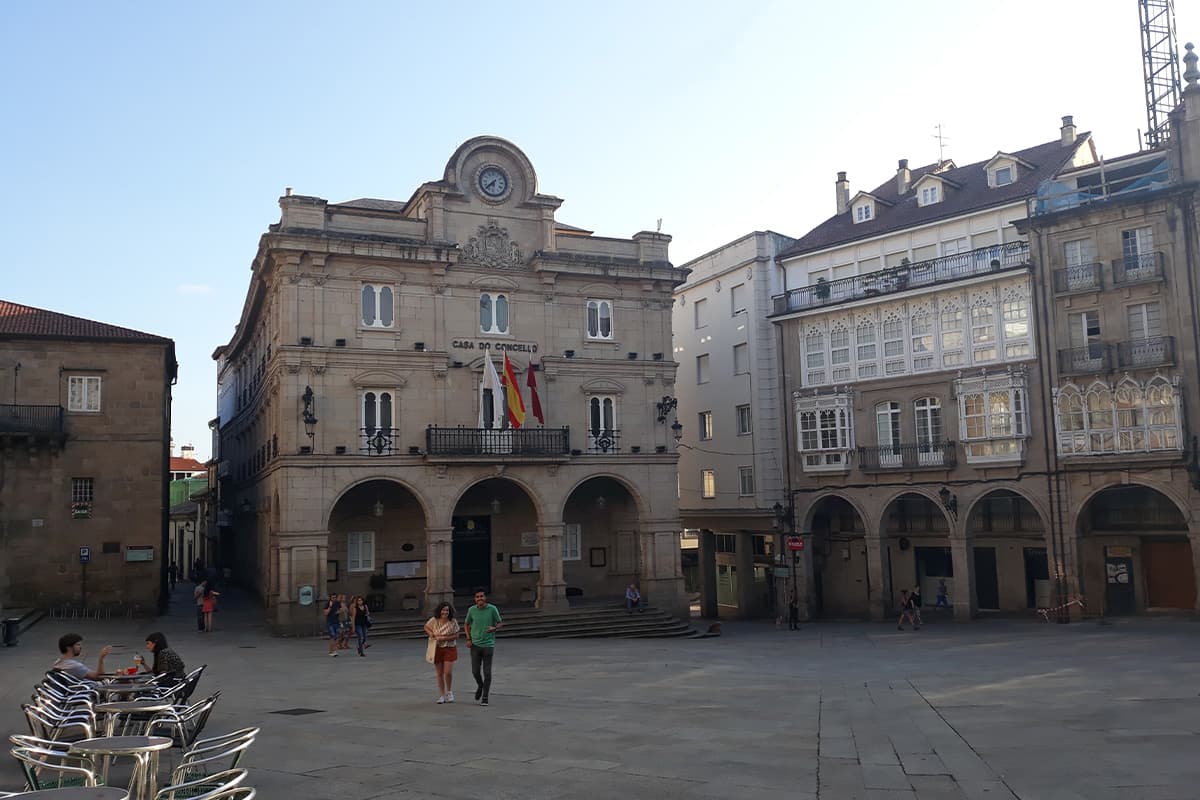
“Ourense City Council 01” by Simon Burchell is licensed under CC BY-SA 4.0.
millennium bridge
The Millennium Bridge is an avant-garde construction dating from 2001 and was built to welcome the new millennium, as a symbol of the city’s adaptation to the new times.
It has a very characteristic shape and structure. You can climb its stairs and contemplate the breathtaking views of the city from the top.
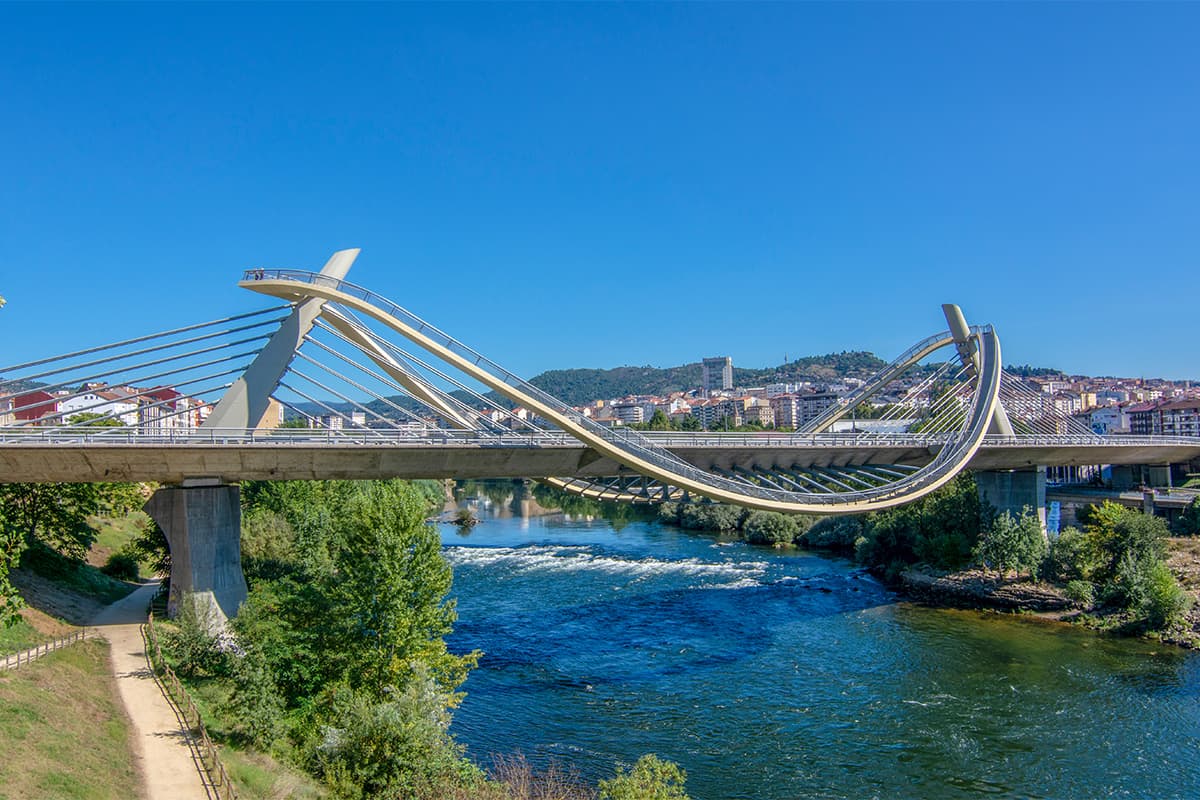
church of santa maria madre
Located on the site of the old cathedral of Ourense, is the Church of Santa María Madre. It has a baroque façade and several columns of low Romanesque style, vestiges of the forgotten cathedral.
Inside, it houses an altarpiece with the image of Santa Maria Madre in the center and another with a sculpture of the Pietà from 1775.
san lazaro park
San Lázaro Park is one of the most central points of Ourense. For this reason, it is always very lively, as many citizens come to spend time and relax.
In the center is a beautiful fountain, from the Monastery of Oseira. At the top, there is the statue of O Carrabouxo, a caricature by Xosé Lois González, well known for appearing in the local newspaper La Región.
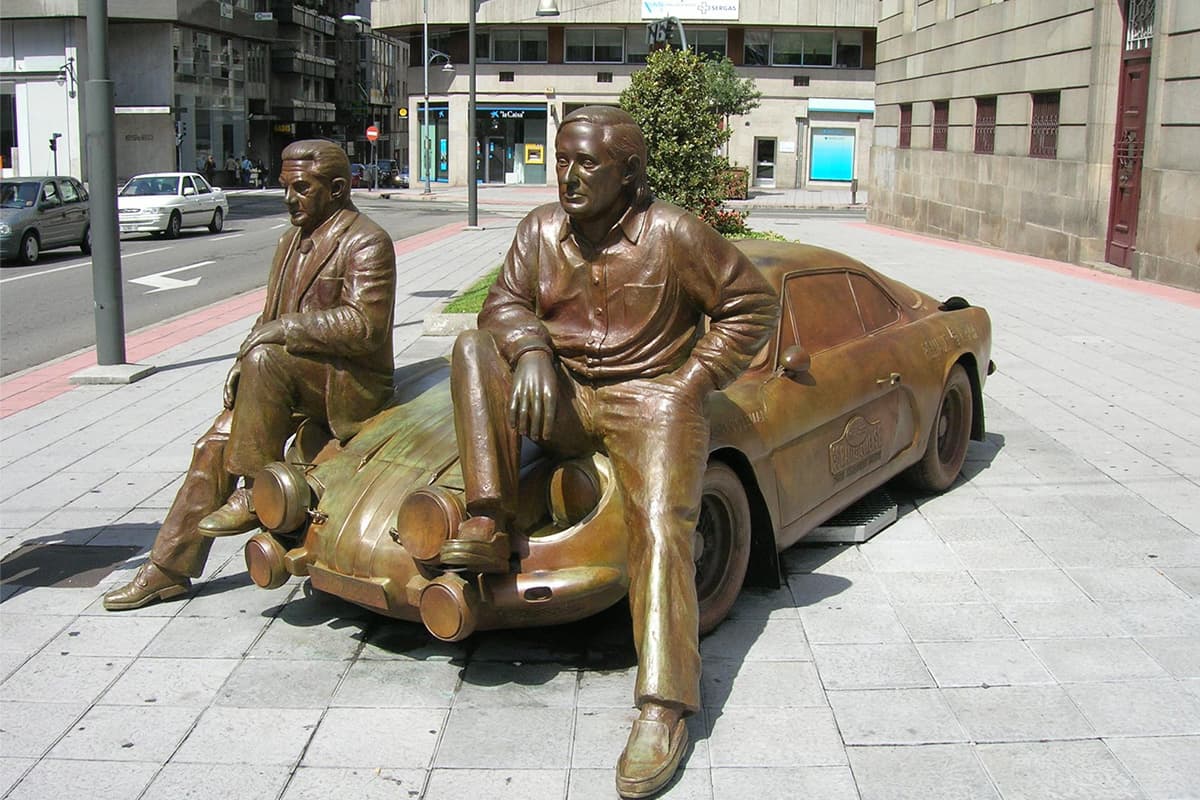
“Tribute to Reverter and Coleman” by FreeCat is licensed under CC BY 2.0.
cathedral of ourense
The Cathedral of Ourense or Cathedral of San Martiño is another monument not to be missed. It was built between the 12th and 13th centuries and is considered an Asset of Cultural Interest.
Of Romanesque style, it has a Latin cross plan and several chapels. The Pórtico del Paraíso (Portico of Paradise) stands out, which makes a visit practically obligatory for any tourist.
General admission is priced at 7 €.
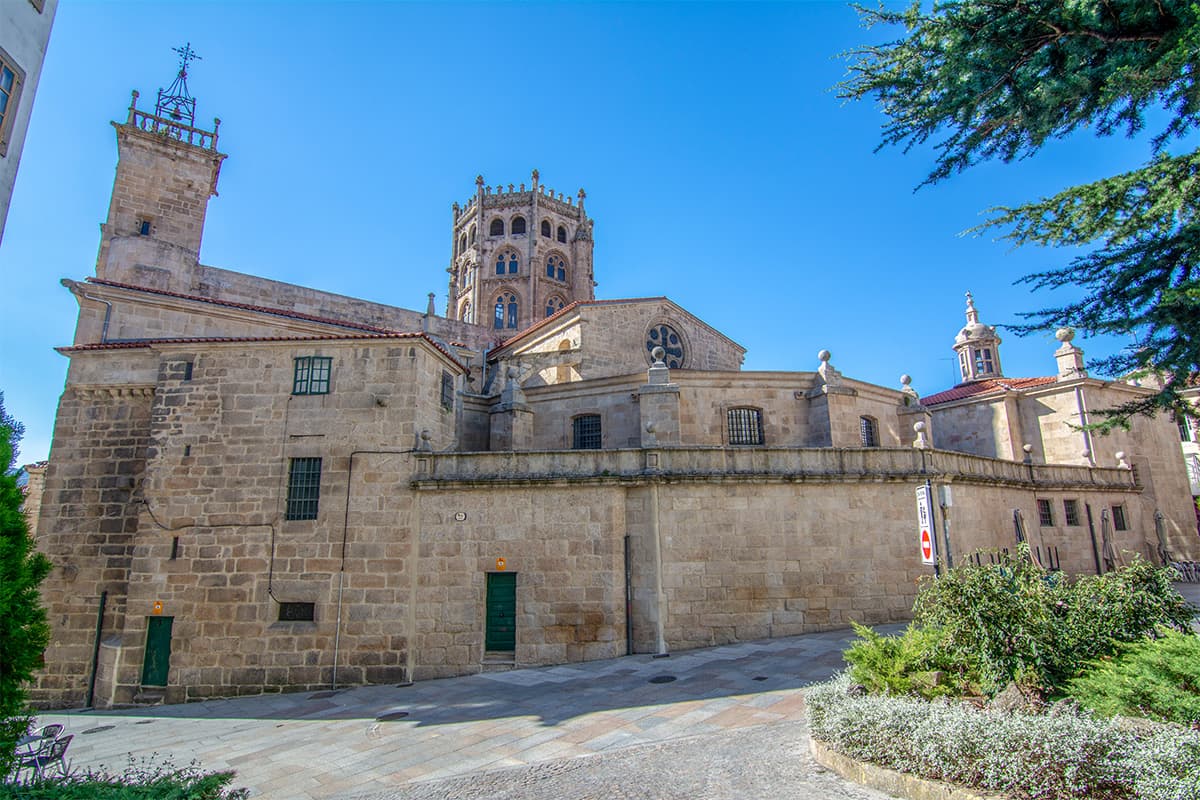
cloister of san francisco
The Cloister of San Francisco is a very representative Gothic work of its time in Galicia. It belonged to a former Franciscan convent. It is composed of 63 arches decorated with plant, mythological and animal motifs.
Currently, it houses the Municipal Auditorium and the National Library.
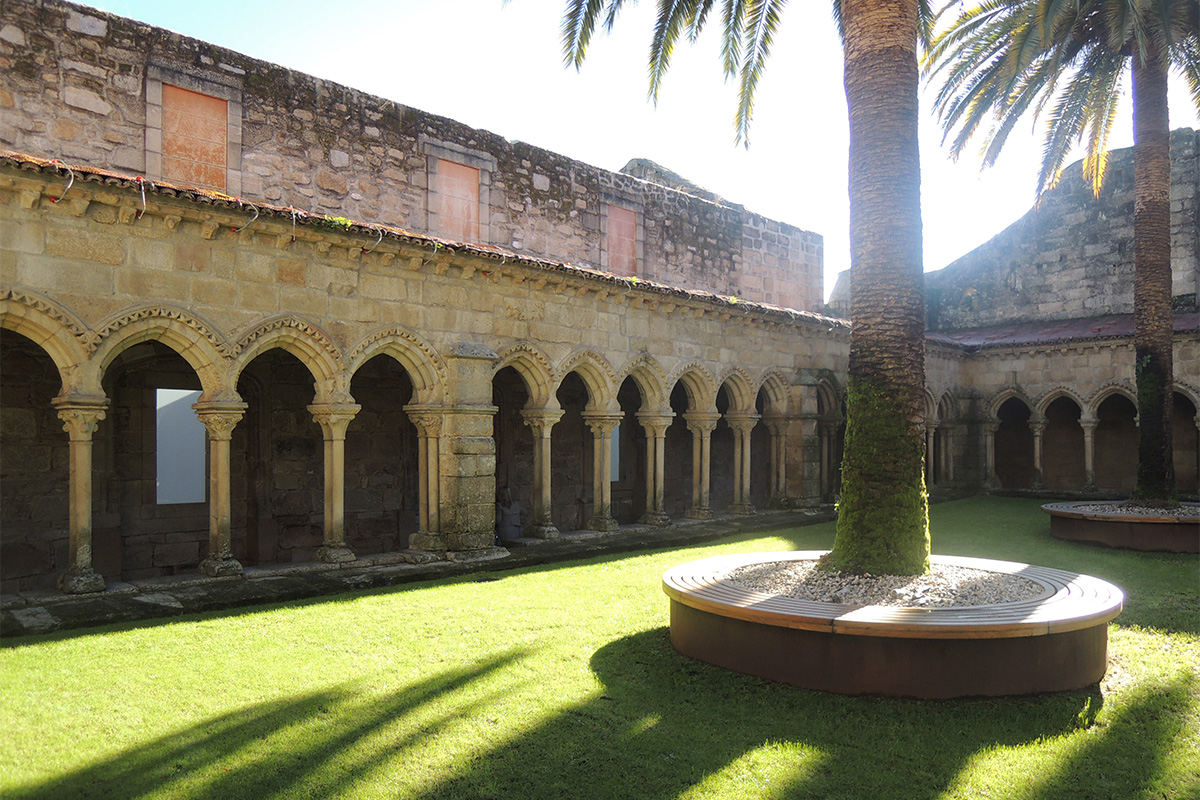
“Cloister of the convent of San Francisco de Ourense.” by FreeCat is licensed under CC BY 2.0.
chavasqueira hot springs
Following the path of the Miño river you will find the Termas de Chavasqueira, a free thermal complex formed by outdoor pools that reach temperatures of more than 40 degrees.
It is located in the middle of nature with an outdoor area, making it the perfect place to relax.

“Chavasqueira Thermal Baths, Ourense” by bea & txm & alan is licensed under CC BY-SA 2.0.
Roman bridge
One of the emblems of the city is the Roman Bridge that crosses the Miño River. It dates back to the 1st century A.D. and is a living reminder of Ourense’s long history. During the 12th century it had to be rebuilt after the central arch gave way.
In the past, it was a strategic pass for the Roman Empire and for Gallaecia. Currently, it preserves 7 of the 11 original arches.

the burgas
As Burgas are the most emblematic thermal baths of Ourense and have thousands of years of history, having originated during Roman times.
The thermal complex is divided into three zones: a neoclassical style fountain where water gushes at 60 degrees, the central pool where you can bathe at 40 degrees and the archaeological zone, which has a pool-sanctuary from the first century AD.
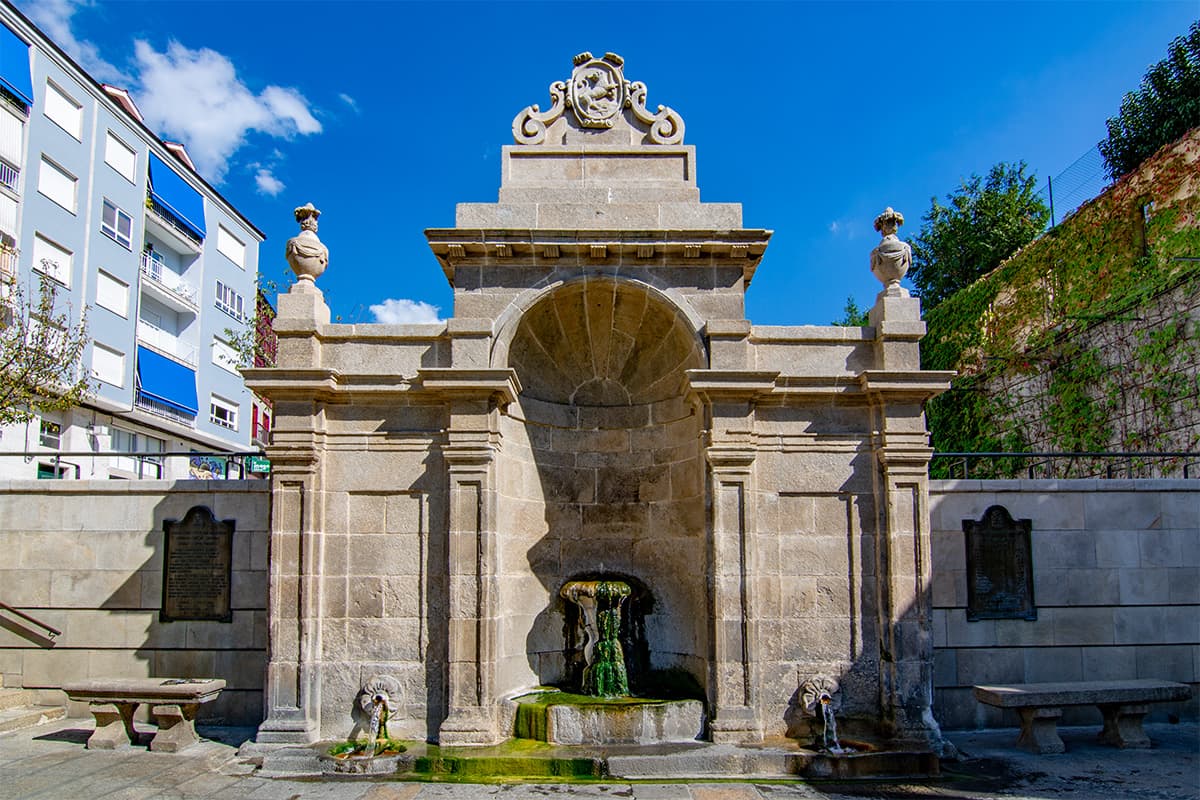
gastronomy and leisure
Ourense is an inland city, so it is curious that its typical gastronomy is linked to the sea. Among its typical dishes, the octopus á feira stands out, which is a must in any celebration. It is also worth mentioning the lamprey or the eels of the Miño, together with the “lacón con grelos” (pork shoulder with turnip greens) and the Galician stew.
As for desserts, you can try the bica, a traditional Galician sponge cake made with butter, or almendrados.
Nor can you miss the wines of the Ribeiro, Monterrei, Valdeorras and Ribeira Sacra designations of origin. A tasting that will take away all your senses.

events and festivals
The most important festivals in Ourense are the festivities of San Martiño, the Entroido and the Festivities of Ourense.
san martiño festivities
The festivities of San Martiño are held in honor of San Martín de Tours, patron saint of the city since the Middle Ages. They coincide with the celebration of the magosto, on November 11, when citizens take to the streets to roast the first chestnuts of the season in large bonfires and play popular games. It lasts all day and part of the night and has been declared a Festival of Tourist Interest in Galicia.
the entroido
The Entroido or Carnival of Ourense is a party with a long tradition, since it continued to be celebrated despite the prohibitions during the Franco regime. During this celebration, everyone goes out in costume to taste the ears, the typical dish of these festivities, which can be sweet or salty.
festivals of ourense
The Festivities of Ourense are the main festivities of the city. They take place at the end of June, in five days that are full of activities, music and shows that enliven the provincial capital.
It features itinerants, concerts and a medieval market open every day so you can immerse yourself in the city’s past.
News
The ‘Día das Letras Galegas 2025’ pays tribute to its popular songbook
On May 17, 2025, Galicia will celebrate the Día das Letras Galegas with a special tribute to popular oral poetry and to the women who, over generations, have been its main guardians and transmitters: the cantareiras.
Walking the Camino de Santiago with your dog
There are many pilgrims who decide to do the Camino de Santiago with their dogs to strengthen the bond between owner and pet, enjoy nature and live the spirituality of the...
What to do this April in Santiago
April is here, a perfect month to enjoy the spring and the great cultural offer of Compostela. As always, we have prepared a list of events for you to know what to do this April in Santiago.


